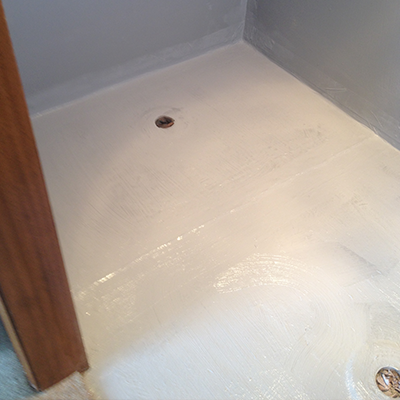
 Bathrooms and laundry rooms, by their very definition, are wet areas. Of course, the moistness is acceptable, but only if a waterproofing strategy is in place, one that will protect the construction materials behind the wet area walls. After all, the warm water can splash off an engagingly designed array of wall tiles, but it cannot be allowed to penetrate those tiles and soak through the wall, right? Avoid that excess moisture, the mould and structural damage, by waterproofing wet areas with a superior range of products.
Bathrooms and laundry rooms, by their very definition, are wet areas. Of course, the moistness is acceptable, but only if a waterproofing strategy is in place, one that will protect the construction materials behind the wet area walls. After all, the warm water can splash off an engagingly designed array of wall tiles, but it cannot be allowed to penetrate those tiles and soak through the wall, right? Avoid that excess moisture, the mould and structural damage, by waterproofing wet areas with a superior range of products.
Water, Water Everywhere
A child’s happy splashing sends a spray of foamy water flying. When the adult decides to take a shower or bath, there’s no horseplay, but there’s still a moist splatter of soapy water hitting the walls. Moisture barriers stop the soapy discharge so that the wet torrents stream harmlessly down the walls. Once part of the pooled wet stuff on the shower basin or bathtub bottom, the gathered water funnels its way down the drain, never to be seen again by you or your family.
Waterproofing Wet Areas
 The above bathing scenario illustrates how your water flows when the walls are sealed. There are splash panels at the sink, grouted tiles above and around the shower, and silicone caulk around the edges of the bathtub, right where it contacts the wall. It’s thanks to these moisture barriers that the structural surfaces behind the tiles remain dry and mould-free, but what are these caulks and grouts you’re only now hearing about? Well, there’s the acrylic sealants or latex “caulks” that provide a flexible joint between those connective surfaces in your wet areas. Alternatively, modern silicone compounds adhere and cure like a flexible rubber, so the seal they create will stretch and compress as the heat in the bathroom or laundry area rises and falls. Finally, there are powder-based grouts, the mainstay of bathroom waterproofing. Look for rubber floats (A grouting tool) and caulking guns when these waterproofing agents are installed.
The above bathing scenario illustrates how your water flows when the walls are sealed. There are splash panels at the sink, grouted tiles above and around the shower, and silicone caulk around the edges of the bathtub, right where it contacts the wall. It’s thanks to these moisture barriers that the structural surfaces behind the tiles remain dry and mould-free, but what are these caulks and grouts you’re only now hearing about? Well, there’s the acrylic sealants or latex “caulks” that provide a flexible joint between those connective surfaces in your wet areas. Alternatively, modern silicone compounds adhere and cure like a flexible rubber, so the seal they create will stretch and compress as the heat in the bathroom or laundry area rises and falls. Finally, there are powder-based grouts, the mainstay of bathroom waterproofing. Look for rubber floats (A grouting tool) and caulking guns when these waterproofing agents are installed.
Ideally, a whole surface membrane coats wet areas. Rubberised coatings and moisture-approved wall panels form the foundations of that layered approach. After the initial membrane is applied, the tiles and panels, mosaic pieces and backsplash boards are installed. Then, in order to stop mildew and mould growth, waterproof joints are utilised. They’re laid in the open cracks and between the tiles as cement-based grout or as acrylic latex. Top-tier silicone sealants complete this product family, with their flexible material bases really forming a flexible, distortion-proof boundary guard.
Creative Bathrooms and Interiors Uses Environmentally Friendly Products
 Creative Bathroom and Interiors recommends and uses products from Davco, the market leader in tile installation products. They are committed to sustainability, aware that they have a responsibility to the environment and working to provide cleaner, safer and healthier adhesive range of products.
Creative Bathroom and Interiors recommends and uses products from Davco, the market leader in tile installation products. They are committed to sustainability, aware that they have a responsibility to the environment and working to provide cleaner, safer and healthier adhesive range of products.
It is just as important to use a primer prior to waterproofing.
Davco K10 Plus – A flexible, 1 part, ready to use, water based polyurethane Class III waterproofing membrane. Suitable for interior and exterior applications. Commercial and domestic walls and floors.
- Ready to use straight from the pail
- Suitable as an anti-fracture membrane
- Excellent curing time
- Water-based polyurethane
- Non-toxic
- UV stable
Davco Ultraprime – An acrylic surface primer designed to increase the bond strength of tile adhesives and waterproofing membranes. Suitable for interior and exterior applications. Commercial and domestic walls and floors. It acts as a primer and a sealer.
Optimized by: Netwizard SEO
